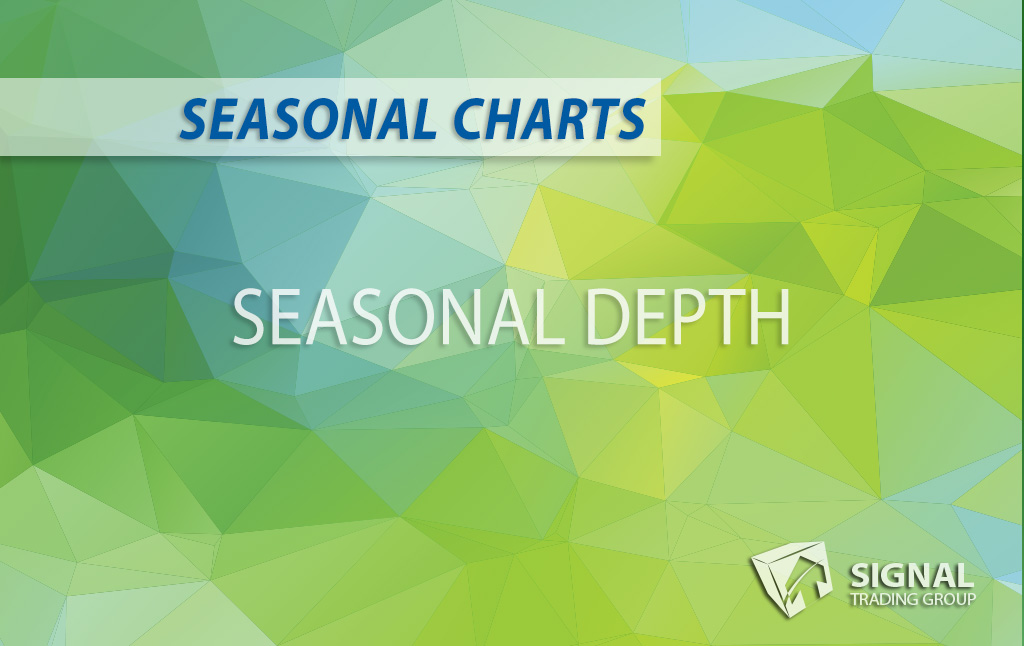The Technical Analysis 101 blog series is your guide to understanding trading concepts, price patterns, and technical indicators. Every post will focus on a specific topic to expand your knowledge and elevate your trading game.
The Power of Seasonal Depth: Uncovering Consistent Market Trends
Seasonal depth is a powerful concept in the world of trading and finance. It refers to the strength and consistency of market trends across multiple timeframes (e.g., 5-year, 10-year, 15-year, and 20-year seasonal charts). Understanding seasonal depth can help traders and investors make more informed decisions about when to enter or exit positions. In this post, we’ll explore the concept of seasonal depth, its importance for market analysis, and how it can be used to improve trading strategies.
What is Seasonal Depth?
As mentioned, seasonal depth is a term used to describe the strength and consistency of seasonal patterns in a market. By examining these patterns over various periods and running a cross-correlation analysis, traders and investors can assess the presence and reliability of seasonal trends in a specific market.
A market with high seasonal depth exhibits solid and recurring patterns consistent across multiple timeframes. This consistency suggests that the underlying factors driving these seasonal tendencies, such as weather conditions, consumer behavior, or industry-specific events, are stable and predictable.
The Benefits of Identifying Markets with High Seasonal Depth
Markets with high seasonal depth can provide valuable insights for traders and investors looking to capitalize on these cyclical trends. By recognizing markets with strong seasonal depth, market participants can enhance their trading strategies, leading to better trading decisions.
Improved Trading Strategies
Knowing when to enter or exit a market is crucial for successful trading. By understanding the seasonal trends in a market with high seasonal depth, traders can identify optimal times to take positions, resulting in a higher probability of generating profit.
Decision-Making Confidence
When seasonal patterns are more predictable, investors can make decisions more confidently. This helps to reduce decision fatigue and improve the overall investment process.
How to Use Seasonal Depth in Market Analysis
There are several ways to incorporate seasonal depth into your market analysis:
- Analyze Seasonal Charts: Compare historical seasonal charts on different timeframes (5-year, 10-year, 15-year, etc.) to identify consistent patterns. Look for markets with solid and recurring trends that persist across multiple periods.
- Cross-Correlation Analysis: Conduct a cross-correlation analysis of different timeframes to measure the degree of similarity between the seasonal patterns. A high correlation indicates consistent seasonal depth.
- Identify the Factors: Research the underlying forces driving the seasonal tendencies in the market. This could include weather patterns, consumer behavior, or annual industry events. Understanding these factors can help you predict when seasonal trends will occur.
- Incorporate Seasonal Depth into Your Trading Strategy: Use the insights from your seasonal depth analysis to inform your trading or investing plan. This may involve adjusting entry and exit points based on historical seasonal patterns or allocating a higher weight to markets with seasonal solid depth.
The Power of Seasonal Depth: A Valuable Tool for Traders and Investors
In conclusion, seasonal depth is a powerful tool for traders and investors looking to understand market trends better and improve their strategies. By incorporating seasonal depth analysis into your decision-making process, you can make more informed market decisions and capitalize on valuable investment opportunities that cyclical trends provide. Remember that while seasonal patterns can provide helpful guidance, no trading strategy is foolproof. Consider other fundamental and technical factors to make well-rounded and informed decisions.




